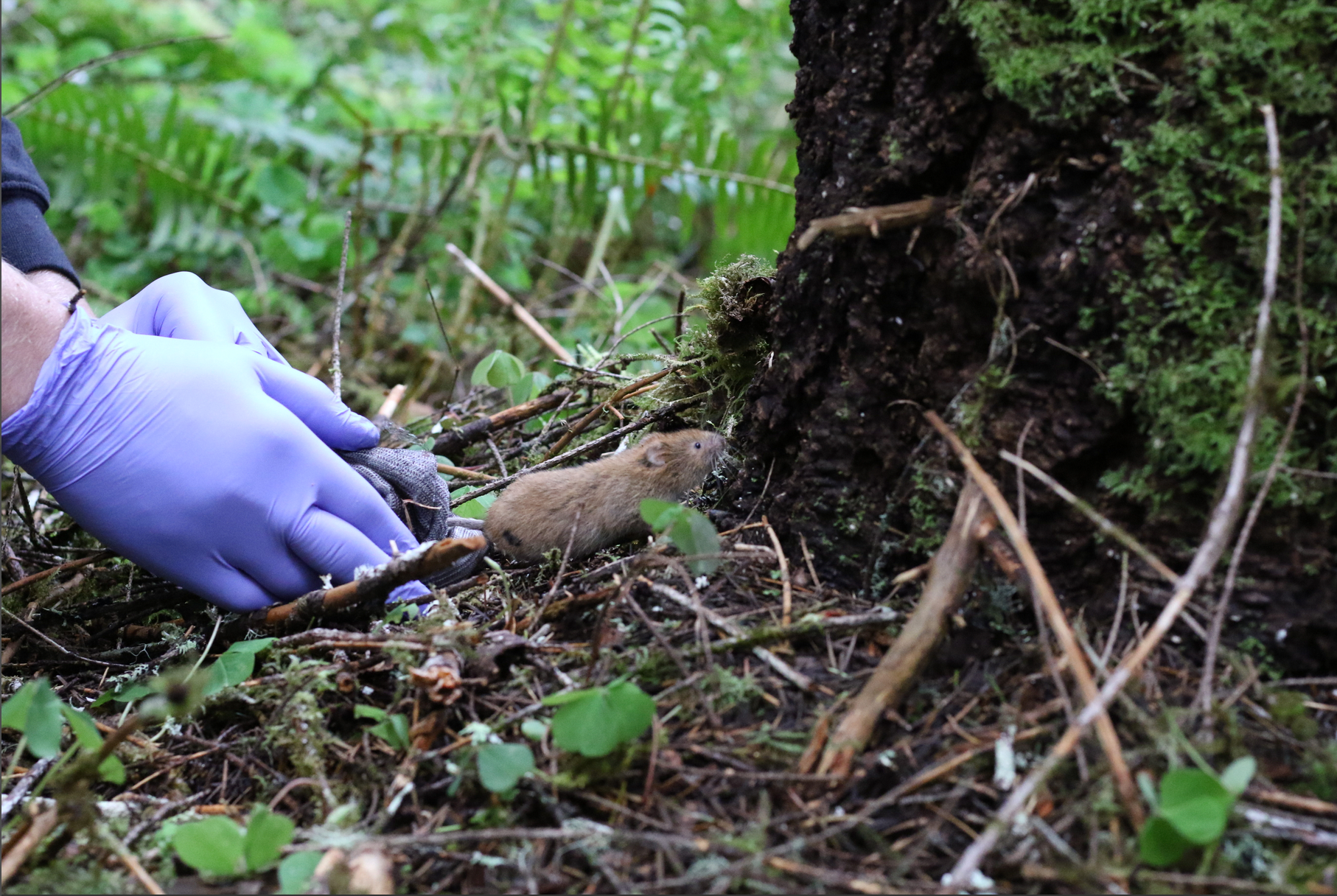Have you ever heard of red tree voles? I first learned about these fabulous little fuzz balls in 6th grade, and I have been smitten with them ever since (don't believe me? I made them my capstone project for BIOL 226: Biological Diversity while at Earlham College... look, I even made a website about them). This year I fulfilled a childhood dream, and spent the season studying them in my home state.
So what are red tree voles? There are an estimated 120-150 different vole species in the world (different taxonomies disagree on the exact number), almost all of which can be found in meadows and forest floors around the world. Red tree voles are a dramatic exception to the rule – they are found almost exclusively in the canopies of some of the tallest trees in the world: Douglas Firs. Generations of voles may spend their whole lives in the canopy of a single ancient Douglas-fir tree!
Sadly, many red tree vole populations are under threat from habitat loss and fragmentation. Our increasingly devastating forest fires and continued old-growth logging are all taking a toll. In fact, the U.S. Fish & Wildlife service is currently considering a portion of their population for protection under the Endangered Species Act.
Okay, enough about how cool red tree voles are. But if you ever want to hear another hundred fun facts... you know where to find me.
I joined an ambition project with a number of study goals, but I'll focus on two of our big questions here.
1. Are red tree voles able to use younger forest stands?
Much of the Oregon coast range is managed for timber harvest and is a variable mosaic of older stands and young timber plantations. Although red tree voles are considered old-forest obligates, meaning they depend on old-growth forests to survive, they are also found in younger forests. The value these young forest stands provide for red tree vole habitat is not well understood. Are voles using these younger forests to move between old-forest patches? Are the voles able to sustain healthy populations in the younger forests themselves? Or are the younger forests acting as an "ecological trap", which means that the voles are attracted to the habitat but are unable to survive in it?
To answer these questions, this red tree vole project has been surveying red tree vole nests and capturing voles in different forest ages for three years to date. This will allow researchers to establish a framework assessing vole persistence and colonization over time in this habitat.
2. How well are we able to find red tree vole nests in old forest using a new method?
How do you find a species that spends its whole life in the top of a tree? You have to climb the tree! But first you have to find the right tree...
In younger forests, it's possible to locate vole nests from the forest floor using binoculars to search the canopy. In older forests... not so much. Not only is the canopy hundreds of feet above you, and blocked by a thick understory canopy, voles in old-forests prefer nesting in cavities and hidden in moss mats that are impossible to spot from the ground. One study estimated that fewer than 3% of red tree vole nests in old forests were successfully located from the ground (Marks-Fife 2016)!
In this project, we pioneered a new survey method in which we climbed a central lookout tree and surveyed the surrounding trees from within the canopy. We then climbed every single tree around it to test how effectively we were able to spot nests from the center tree.
Have questions about the project? Contact project lead Jason Piasecki (jason.piasecki@oregonstate.edu) to learn more!
